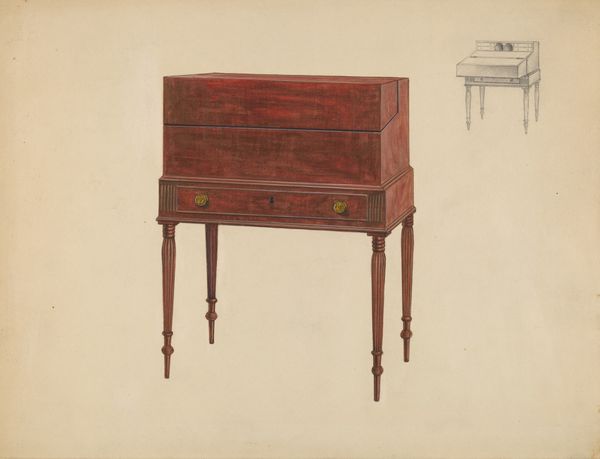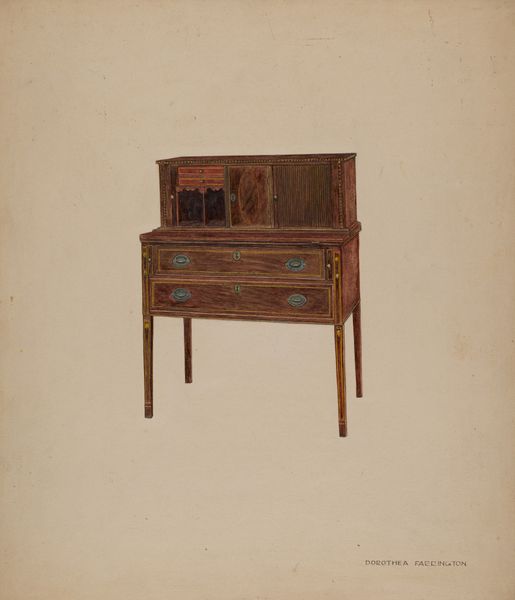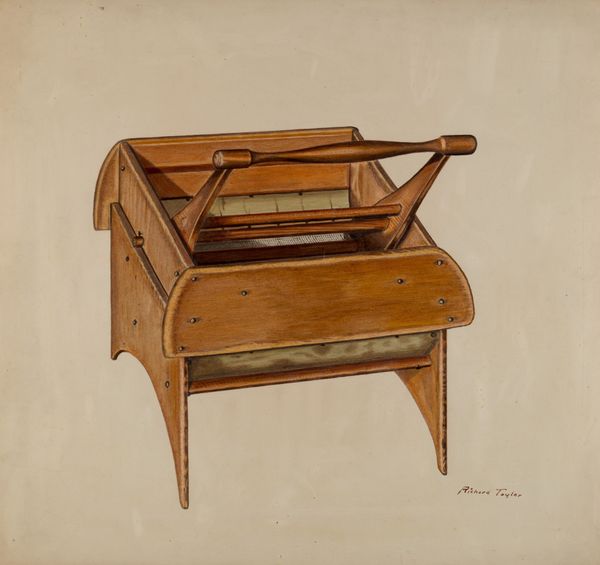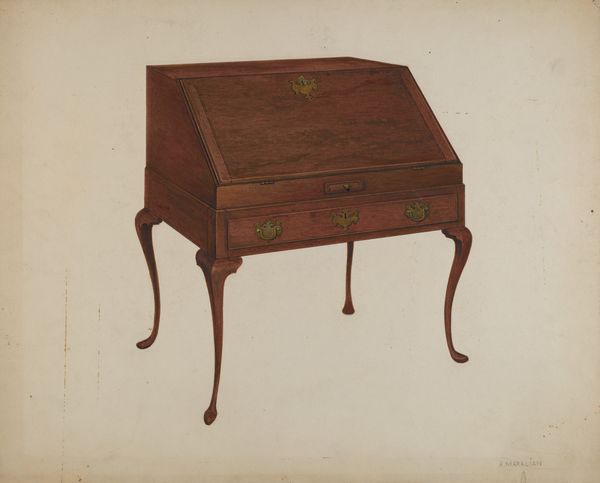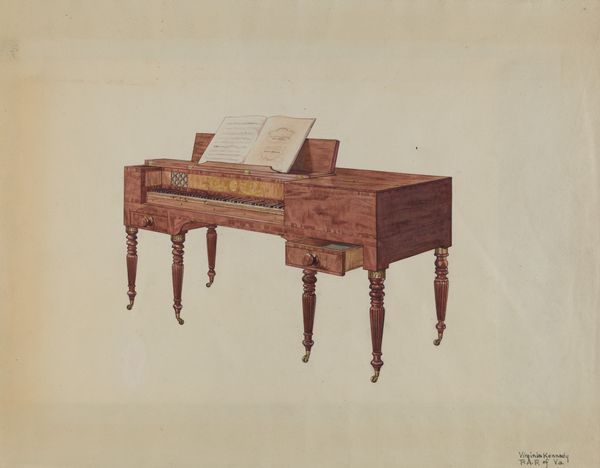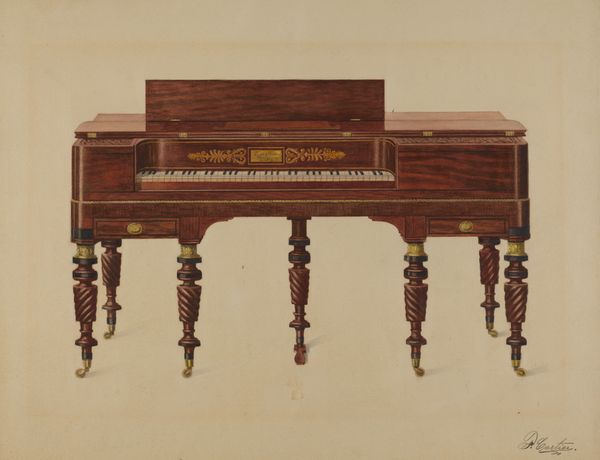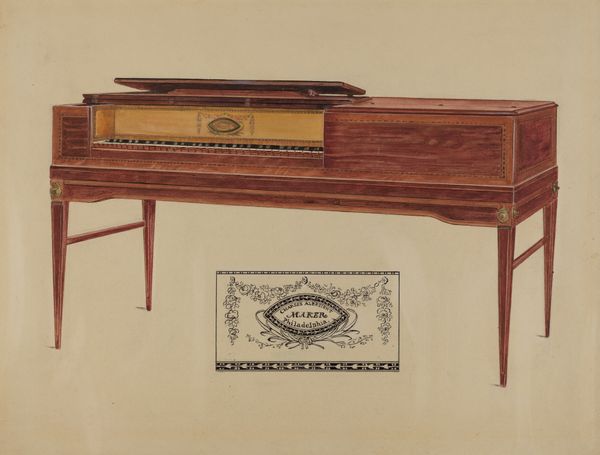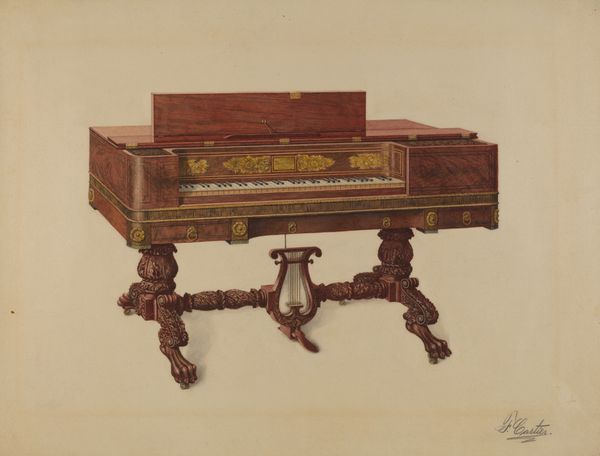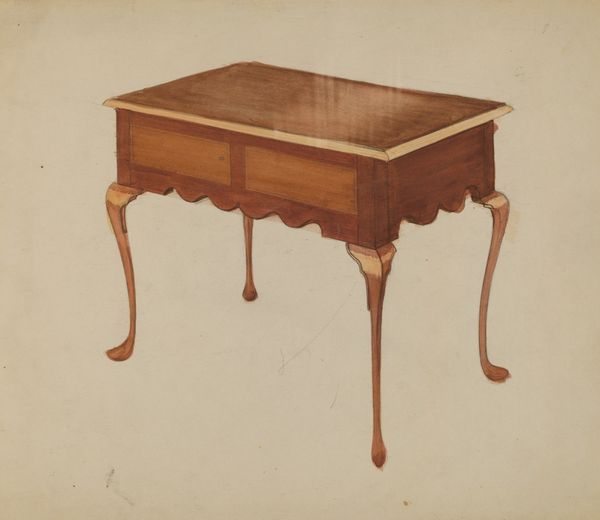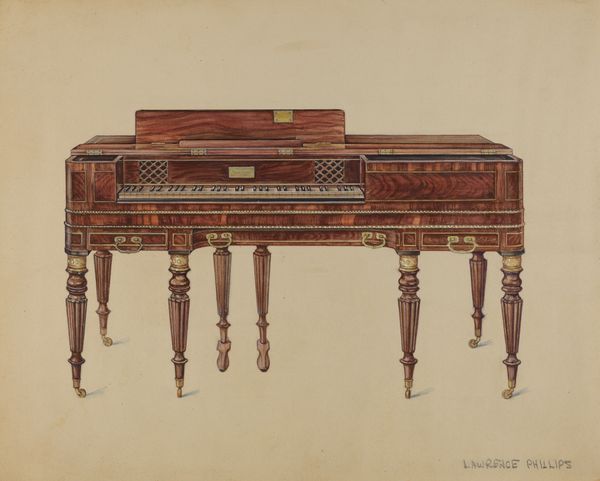
drawing, coloured-pencil, paper
#
drawing
#
coloured-pencil
#
paper
#
coloured pencil
#
realism
Dimensions: overall: 22.9 x 30.6 cm (9 x 12 1/16 in.)
Copyright: National Gallery of Art: CC0 1.0
Editor: This colored-pencil drawing, titled "Desk," was created by Ruth Bialostosky sometime between 1935 and 1942. I'm immediately drawn to the artist's precision in capturing the desk's form, but something about the linear quality feels very modern. What can you tell me about this piece? Curator: Observe the clean lines, and consider how the artist rendered three-dimensional form using only color pencil. The work relies entirely on its internal arrangement for effect. The composition’s strength is derived from the contrast of light and shadow across its surfaces. The artist seems interested in form and line. Editor: I see what you mean. It's as if the colored pencils themselves highlight the geometric quality of the design. What does that mean for how we should interpret this work? Curator: We need to closely analyze its formal elements to interpret it effectively. The artist is making deliberate choices about color saturation and highlighting specific features. This meticulous attention encourages an emphasis on surface qualities, rather than narrative or expression. The color acts like a tool of delineation and contributes towards this aesthetic effect. Editor: So, we are more focused on understanding why she chose to portray the desk in such a precise manner rather than asking what the desk might symbolize, or represent to her personally? Curator: Exactly. It is primarily about understanding how she perceived structure and how she reduced a desk to lines and flat planes using this medium. The shadows play an integral role here. Notice where the artist places those shadows to generate meaning in this artwork. Editor: That’s interesting, seeing the choice of colors and use of shadows as artistic decisions in themselves adds so much. Thanks for this perspective. Curator: You're welcome. I think close looking helps unlock those nuances that help one understand not only how one views a piece but also why a work comes into being.
Comments
No comments
Be the first to comment and join the conversation on the ultimate creative platform.
